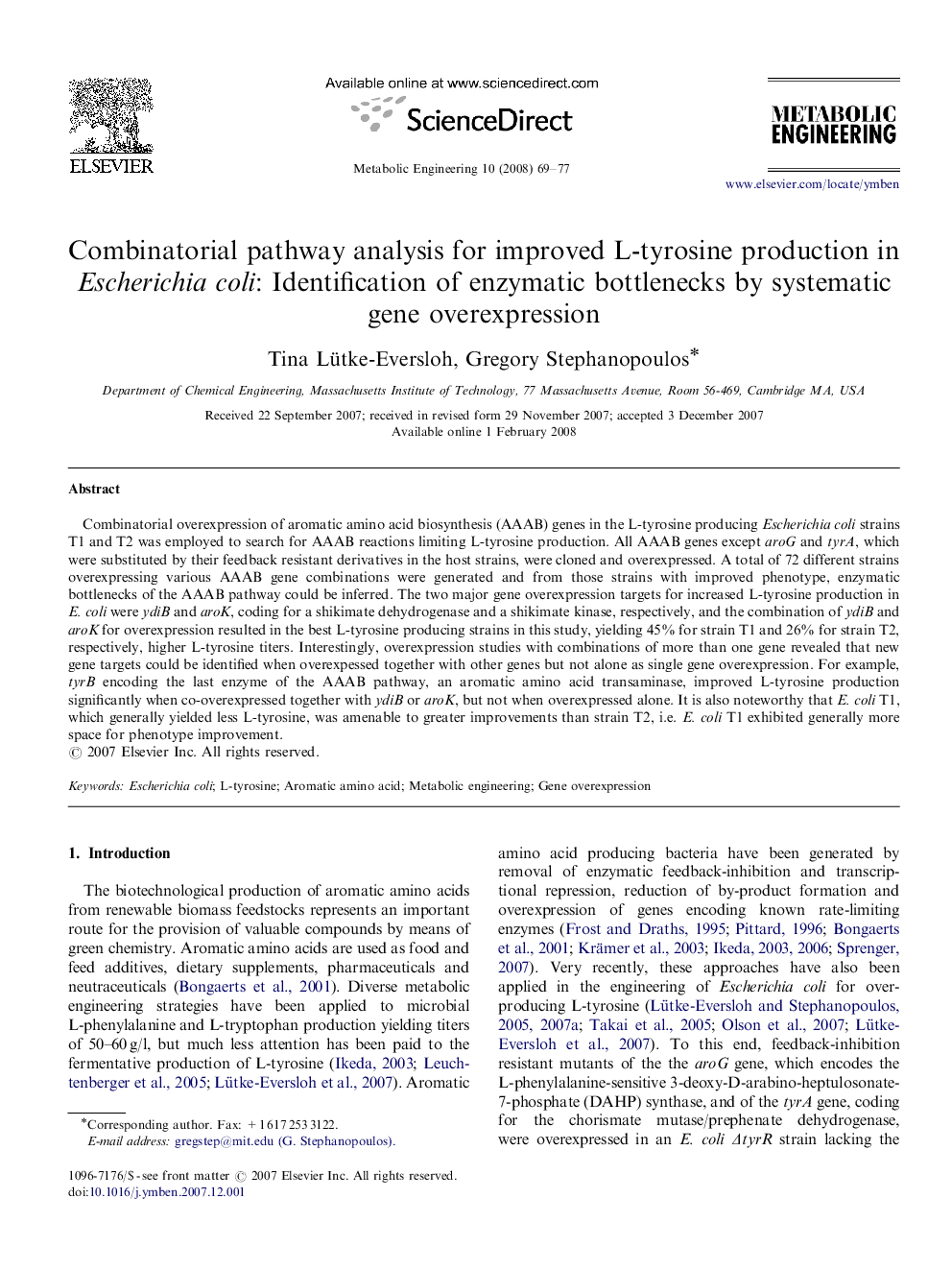| Article ID | Journal | Published Year | Pages | File Type |
|---|---|---|---|---|
| 31904 | Metabolic Engineering | 2008 | 9 Pages |
Combinatorial overexpression of aromatic amino acid biosynthesis (AAAB) genes in the L-tyrosine producing Escherichia coli strains T1 and T2 was employed to search for AAAB reactions limiting L-tyrosine production. All AAAB genes except aroG and tyrA, which were substituted by their feedback resistant derivatives in the host strains, were cloned and overexpressed. A total of 72 different strains overexpressing various AAAB gene combinations were generated and from those strains with improved phenotype, enzymatic bottlenecks of the AAAB pathway could be inferred. The two major gene overexpression targets for increased L-tyrosine production in E. coli were ydiB and aroK, coding for a shikimate dehydrogenase and a shikimate kinase, respectively, and the combination of ydiB and aroK for overexpression resulted in the best L-tyrosine producing strains in this study, yielding 45% for strain T1 and 26% for strain T2, respectively, higher L-tyrosine titers. Interestingly, overexpression studies with combinations of more than one gene revealed that new gene targets could be identified when overexpessed together with other genes but not alone as single gene overexpression. For example, tyrB encoding the last enzyme of the AAAB pathway, an aromatic amino acid transaminase, improved L-tyrosine production significantly when co-overexpressed together with ydiB or aroK, but not when overexpressed alone. It is also noteworthy that E. coli T1, which generally yielded less L-tyrosine, was amenable to greater improvements than strain T2, i.e. E. coli T1 exhibited generally more space for phenotype improvement.
